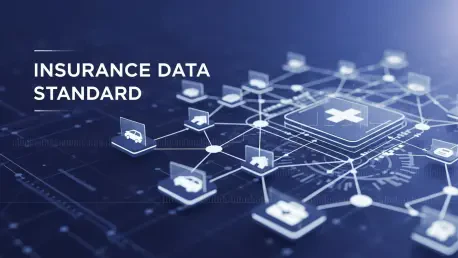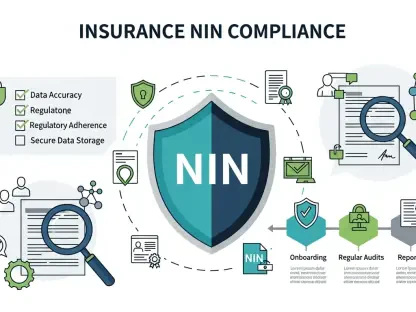Pioneering a Data Revolution in Insurance
The insurance industry stands at a critical juncture, burdened by fragmented data systems that cost billions annually in inefficiencies and missed opportunities, and with the launch of the openIDL Homeowners Standard v.1.0 by openIDL, an initiative under the Linux Foundation, a seismic shift is underway. This groundbreaking free and open data standard promises to unify disparate practices, offering a lifeline to insurers, regulators, and tech providers struggling with interoperability. This market analysis delves into the implications of this development, exploring how it addresses chronic pain points and reshapes the competitive landscape.
Understanding the significance of this standard requires a deep dive into current market dynamics and future projections. The insurance sector, long plagued by inconsistent data formats, faces mounting pressure to digitize and streamline operations amid rising regulatory demands. This analysis aims to unpack the immediate impacts of the standard on property risk data management while forecasting its broader influence on industry trends. By examining adoption patterns and potential economic benefits, stakeholders can better navigate this transformative moment.
The focus here is not merely on technical specifications but on the strategic opportunities and challenges that lie ahead. From cost reductions to enhanced analytics capabilities, the ripple effects of this initiative are poised to redefine how the market operates. This exploration will provide actionable insights into how businesses can leverage the standard to gain a competitive edge in an increasingly data-driven environment.
Market Trends and Strategic Implications
Current Landscape: Fragmentation as a Barrier to Growth
The insurance market today is characterized by a patchwork of proprietary data systems that hinder efficiency and inflate operational costs. Insurers often spend substantial resources translating data between incompatible formats, leading to delays in underwriting and regulatory reporting. This fragmentation not only stifles innovation but also creates disparities in risk assessment, with some estimates suggesting that data inconsistencies contribute to losses of up to 10% of annual premiums for mid-sized firms. The introduction of a unified standard marks a pivotal response to these entrenched issues.
Regulatory pressures compound the challenge, as varying regional requirements force companies to maintain multiple reporting frameworks. The lack of a cohesive data model has historically limited the scalability of digital tools, such as automated underwriting platforms, which rely on structured information. With the openIDL Homeowners Standard v.1.0, there is an opportunity to break down these silos, aligning the industry toward a more integrated future. Early adopters are already reporting improved compliance turnaround times, signaling a shift in operational paradigms.
This trend of standardization is not isolated but reflects a broader push across industries for interoperability in the digital age. As insurtech startups continue to disrupt traditional models, established players must adapt or risk losing market share. The standard’s focus on property risk data serves as a testbed for wider applications, offering a glimpse into how unified frameworks can drive efficiency. Market observers anticipate that this initial release will catalyze demand for similar standards across other insurance lines.
Adoption Dynamics: Opportunities and Hurdles
Drilling deeper into market behavior, adoption of the openIDL Homeowners Standard v.1.0 is expected to vary by company size and geographic focus. Larger insurers with robust IT infrastructures are likely to integrate the standard swiftly, capitalizing on immediate benefits like a projected 15% reduction in data handling costs. Pilot programs have demonstrated tangible gains, with one major carrier noting enhanced accuracy in risk evaluations due to consistent data definitions. These early successes are fueling optimism for widespread uptake over the next two years.
Conversely, smaller insurers face significant barriers, including limited budgets for system upgrades and a lack of in-house expertise. While long-term savings are evident, the upfront investment required for implementation could deter rapid adoption among this segment. Strategic partnerships with technology providers or phased integration plans may offer a viable path forward, ensuring that benefits are accessible across the market spectrum. Industry consortia are stepping in to provide support, aiming to level the playing field.
Geographic variations also play a critical role in shaping adoption trends. Markets with stringent regulatory environments are more likely to embrace the standard as a compliance tool, while regions with less oversight might lag. Multinational firms stand to gain the most, leveraging the standard’s adaptability to harmonize operations across borders. As adoption spreads, competitive dynamics will shift, rewarding agile players who prioritize data standardization with faster decision-making and improved customer offerings.
Future Projections: A Roadmap for Transformation
Looking ahead, the openIDL Homeowners Standard v.1.0 is just the first step in a comprehensive strategy to overhaul insurance data practices. Plans to expand standards to other lines, such as commercial property and flood insurance, are already in motion, with projections estimating a 10-15% reduction in industry-wide data management expenses by 2027. This ambitious roadmap signals a future where standardized data underpins every transaction, unlocking new avenues for innovation and cost efficiency.
Technological advancements are set to amplify these gains, with tools like blockchain enhancing secure data sharing and artificial intelligence powering deeper analytics. Market analysts predict that insurers adopting these complementary technologies alongside the standard will see accelerated returns on investment. However, evolving data privacy regulations could introduce complexities, necessitating continuous collaboration between industry stakeholders and policymakers to balance innovation with compliance.
The long-term outlook suggests a redefined competitive landscape, where data interoperability becomes a key differentiator. Companies that fail to adapt risk falling behind as standardized frameworks enable faster product development and more personalized customer experiences. Speculative insights point to potential new business models, such as data-sharing consortia, emerging from this shift. The market is on the cusp of a structural transformation, with the standard acting as a catalyst for sustained growth.
Reflecting on the Market Shift
The analysis of the openIDL Homeowners Standard v.1.0 launch reveals a turning point for the insurance industry, addressing deep-rooted inefficiencies through a unified data framework. It highlights how the focus on property risk data tackles immediate pain points like inconsistent risk assessments and cumbersome compliance processes. Market trends point to a growing appetite for interoperability, with early adopters reaping significant operational benefits.
Key implications emerge around the need for inclusive adoption strategies that support smaller players while capitalizing on the scalability of larger firms. The forecast of expanded standards and technological integration underscores the potential for substantial cost savings and innovation over the coming years. This shift demands strategic foresight from all stakeholders to navigate both opportunities and challenges.
Moving forward, insurers are encouraged to invest in training and system alignment to fully harness the standard’s capabilities. Technology providers have a unique chance to develop tailored solutions that complement the framework, while regulators can shape policies that foster adoption without stifling progress. Collaborative platforms offer a space to share best practices, ensuring that the industry moves collectively toward a more efficient, data-driven future.









